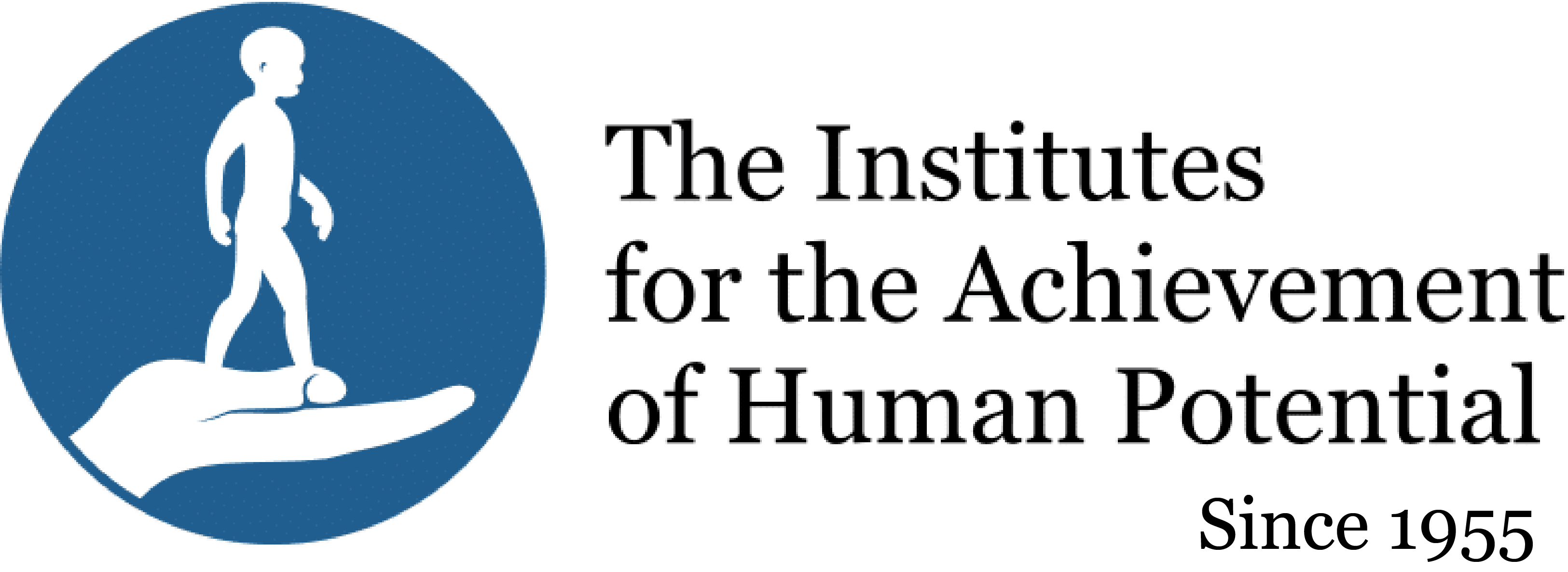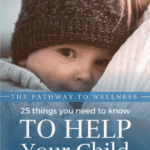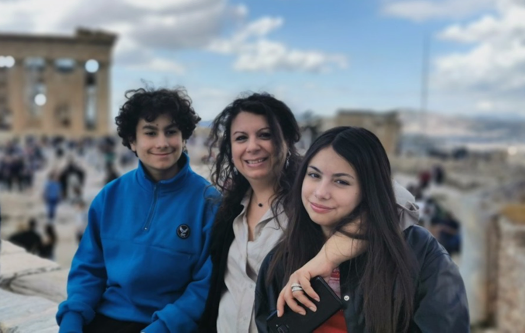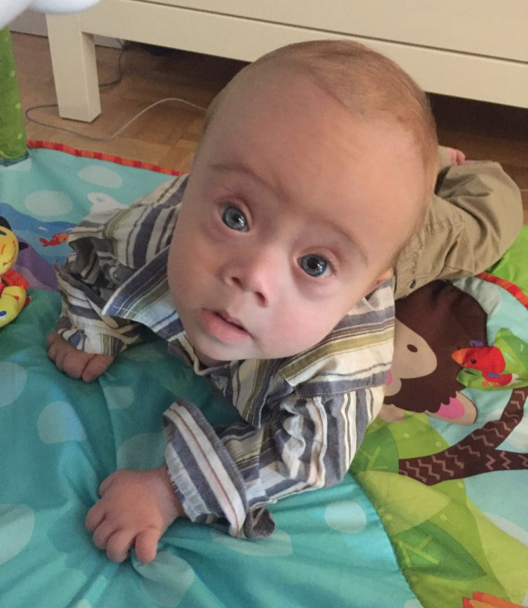What To Do About Your Brain-Injured Child In Mexico City
Parents come from Seven Nations to Mexico City

For more than a half century parents have been making their way from around the world to The Institutes for the Achievement of Human Potential in Philadelphia to find answers for their brain-injured children and for almost that long, the staff of The Institutes have been traveling around the world to provide those answers closer to home whenever they could do so.

Glenn Doman continues to be the primary lecturer in the course through a state-of-the-art video presentation.
One of those countries is Mexico where the course has been given every year for three decades. This week that tradition continues in Mexico City where a team of Staff from the Institutes is presenting the course to parents from Argentina, Bolivia, Colombia, Mexico, Paraguay, Peru and the United States.
The children for whom these parents have come seeking answers range from those who are paralyzed, blind, deaf and tube-fed, to children previously diagnosed with Cerebral Palsy, autism, neurological problems caused by genetic problems such as Trisomy 21, developmental delay, attention deficit disorder and high level learning problems.

Mothers and Fathers from many nations come to Mexico City
In five short days parents understanding will be transformed and their options for their child will be multiplied.
How is that possible?
Day One
“After the second hour of the course on Monday, I called my mother and told her that just those two hours were worth the time, effort, and money.”
Parents will be introduced briefly to the history of the work of The Institutes. They will learn about the causes of brain-injury, why the conventional treatments commonly used to treat hurt children do not succeed and what is essential in effective treatment. They learn that parents are often confused and disheartened by the symptomatic labels that have made them think their child was hopeless. They end the day understanding that their child has an injury to the brain and that the brain has great plasticity and can be treated.

Each day the parents have a delicious lunch together. They learn about each other’s children and realize they are not alone.
Day Two
“The staff was wonderful. They were knowledgeable, kind, helpful and, most of all, quietly confident that they can help your child.”
The day begins with the basic principles of brain growth and development. These principles will become the guiding light in the home programs of each child in the future. The neurophysiological evidence that the brain has incredible plasticity is presented. The most important dynamics in central nervous system transmission are taught. As parents understand the importance of stimulation and opportunity their most important question becomes “So, what is happening in the brain?” This question is addressed.

Parents learn how to evaluate their child on The Institutes Developmental Profile
Parents learn about The Institutes Developmental Profile and how to use that profile to evaluate where their child is compared to the well child. This careful evaluation will be essential as the week goes on. The day ends with an overview on diagnosis in which parents learn that a proper diagnosis cannot be a simple description of symptoms but must provide where the problem is located, how much of a problem there may be and to what degree. Parents now have a clear picture of where their child stands and they are ready to learn what to do about it.

Staff members Susan Aisen, Rumiko Doman and Dr. Ernesto Vasquez check each parent’s work and answer questions to be certain evaluations are accurate.
Day Three
“This is the first time I’ve attended a training institute where I actually felt the staff loved and believed in what they were doing and teaching. It was a pleasure to hear over and over again that a brain-injured child can be helped and had potential.”
Now that parents know how the brain gets injured, why treatment must be directed to the brain and not to the symptoms, how to evaluate their own child and discover the areas of the brain that need stimulation, they are ready to learn how to begin a program. On this day the staff of the Institute for Physical Excellence take over and they teach all aspects of mobility from the immobile child all the way to the child who may walk and run. Parents begin to understand that the physical program is not only about mobility but it is designed to provide neurological organization to all areas of the brain that may be injured. Parents see demonstrations by children on the program. They are taught directly how to do certain parts of the physical program and they actually get to do some of the physical program their child will be doing.

Practical Application: Parents have a “hands-on” opportunity to learn from Dr. Vasquez.

Physical Demonstrations: Parents learn how to create a physical program. Here Rumiko Doman shows equipment that is used to create an ideal mobility environment for the immobile child up to the child who is walking.

Kids’ Demonstrations: Children on the program come to demonstrate parts of the program. Here Victoria shows her gymnastics skills.
Day Four
“I did not expect to be on the edge of my seat every minute of every lecture. I did not expect to get excited and gain this amount of knowledge.”
The staff of The Institute for Intellectual Excellence begin the day with the reasons why reading is the single most important part of a vibrant and effective intellectual program. They present a full background on reading and a detailed program that can be done at home with excellent results. Visual problems and their effect on reading and learning are reviewed. Children on the program are presented and parents have a chance to see the materials developed at home by our families.

Every 50 minutes there is a ten minute break to answer questions. Here Janet Doman learns more about this couple’s child and answers their questions. Parents come with hundreds of questions, our goal is to send parents home with those questions fully answered.
In the afternoon parents learn about oxygen enrichment, medications and detoxification from the medical staff. Environmental toxins and their solutions are presented as well as a comprehensive presentation of The Institutes nutritional program. The day ends with the sensory stimulation program where parents learn how to provide appropriate stimulation to help a blind child see or a deaf child hear or an insensate child feel. This one day covers so much ground that it could be a one week course all by itself.

The course is a blend of video and live presentations

Ana Sofia, 29 months and her mother with Susan Aisen and Janet Doman. Mother has come to answer parent’s questions about the program she has been doing and the results.
Day Five
“Do whatever it takes to get to the course. These five days will forever change your life and, more importantly, your brain-injured child’s life.”
By the final day it is time to answer the question “Is there really hope for my brain-injured child, if so, what are his chances to improve?” The Institutes has kept meticulous records of each child in its Clinical Archive which goes back more than six decades. A summary of the results of treatment is presented so that each parent can evaluate for themselves the significance based upon their new understanding of the development of the brain.

Graduates of the Program: German with his father and mother arrive to meet parents in the course – the same course they attended when German was a little boy who had fallen further and further behind no matter how hard he tried. After coming out of school and doing the program at home for a year he went back to school and rose to the top of his class where he stayed until his High School Graduation. Today he is studying to be an engineer at a top engineering school in Austria.
On this day we take a simple but profound look at the family and each parent understands why at The Institutes it is the family that is the answer. When parents understand exactly why the brain grows the way it does, they are the very best therapists for their children.
Finally, we step back and offer our very best practical advice about what to do and what not to do with a brain-injured child. Sixty years of night and day experience nose-to-nose with the most challenging range of hurt children and teaching the very best parents makes this final presentation invaluable. Parents know they are part of the family of The Institutes.
Take Home
By week’s end parents have:
• A functional neurological evaluation
• Their child’s rate of growth compared to average
• The areas of the brain that must be addressed
• The initial physical program,
• The initial intellectual program
• The initial physiological program
• A lecture notebook that has enough to keep that program going for 6-12 months.

The Course Notebook gives parents a complete set of lecture notes for every lecture and plentiful support materials. It will provide support for parents in the months to come as they begin their new program at home.

Parents return home with support materials: The Institutes’ journal the IN-REPORT that record results every six months for the last 45 years and the Pathway To Wellness

The Institutes Bookstore is open so parents can obtain books and materials easily
But most of all, parents have the understanding and confidence they need to go home and get started making a better life for their child.
And that, is what it is all about.
It has been a wonderful week for the staff and the parents. Many parents in the group did their homework before the course and have already been doing a very good program and getting significant results. What a pleasure it is to be here again. We look forward to welcoming another great group from all over the Spanish-speaking world to the course in Mexico City one year from now.
25-30 August 2019

The staff who make it happen in Mexico: Dr. Ernesto Vasquez, Susan Aisen, Elisa Guerra, and Rumiko Doman
Learn More About the What To Do About Your Brain-Injured Child course
For more information, or to enroll, Contact Ashley
Phone: 215-836-4868
Email: wtd_registrar@iahp.org

 Donate
Donate








